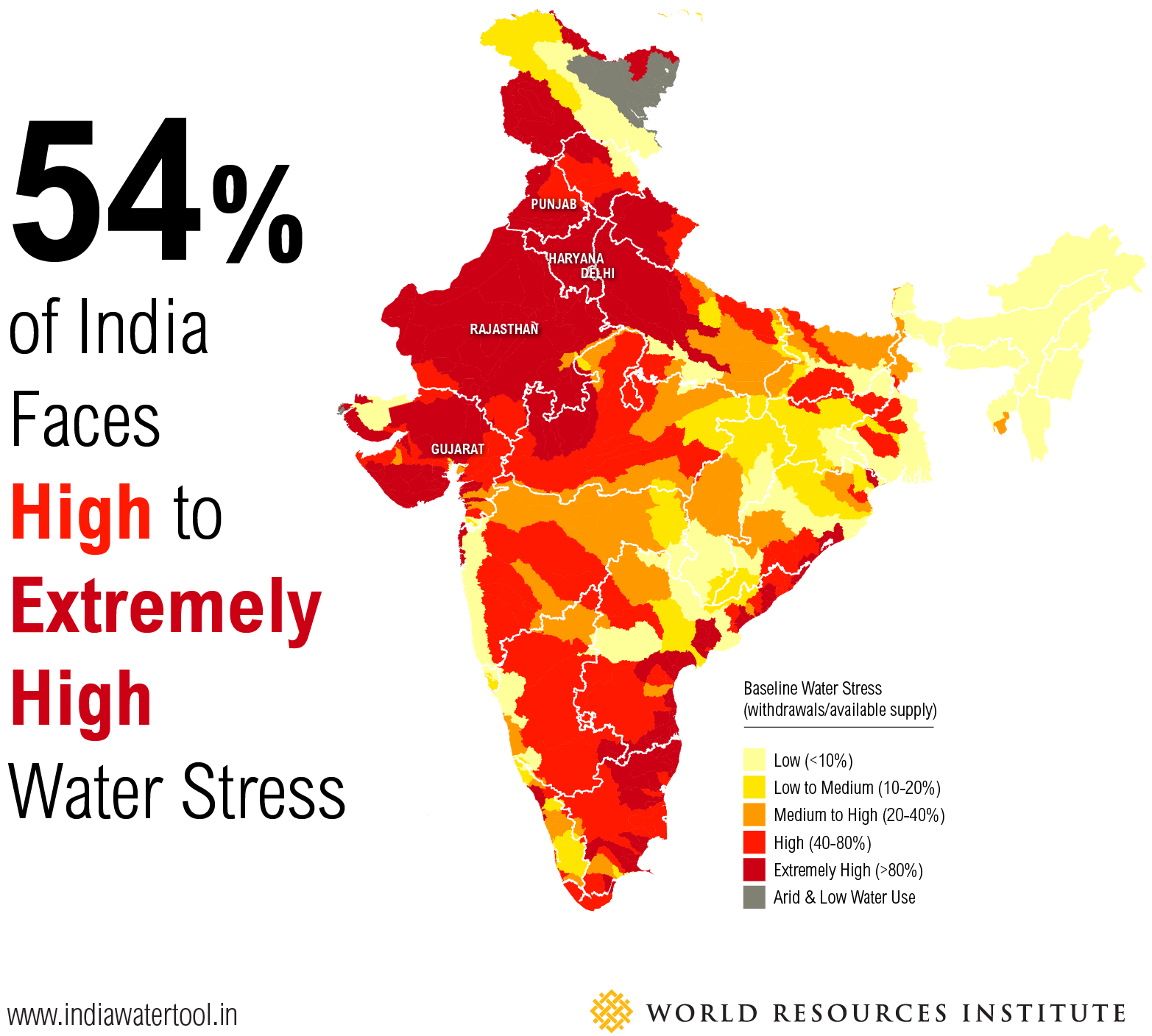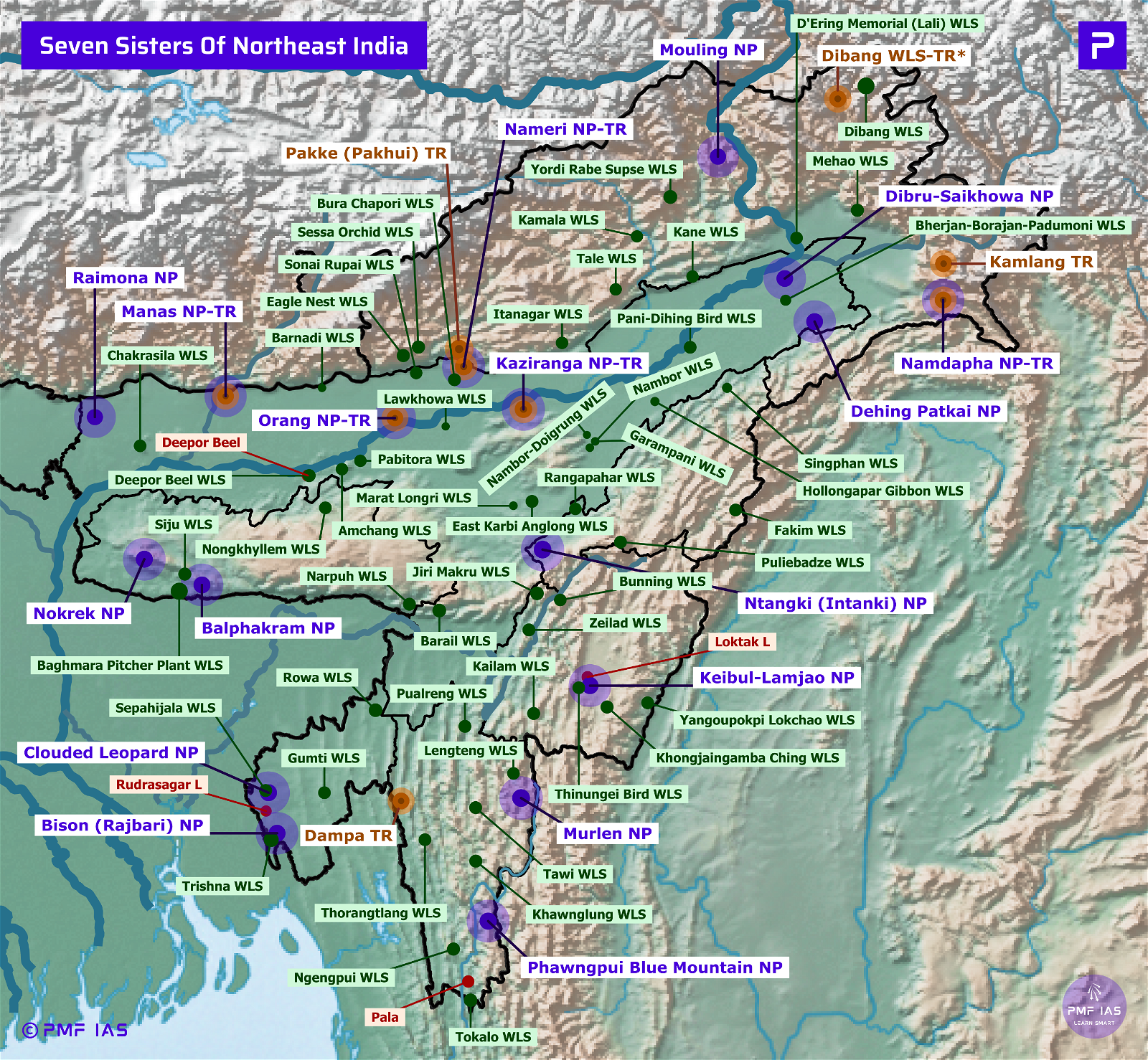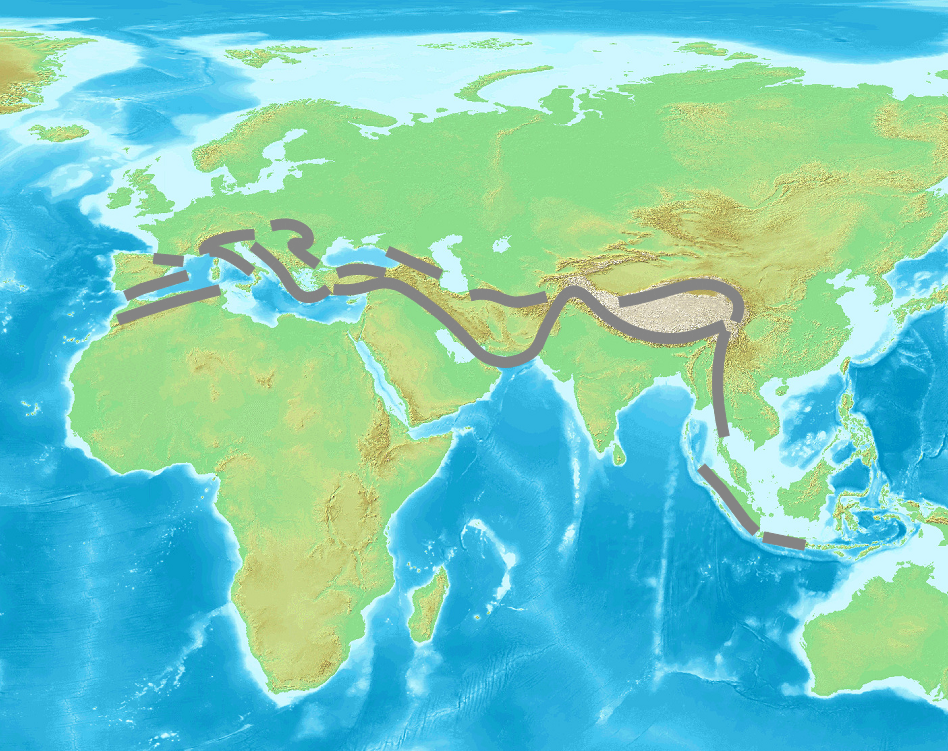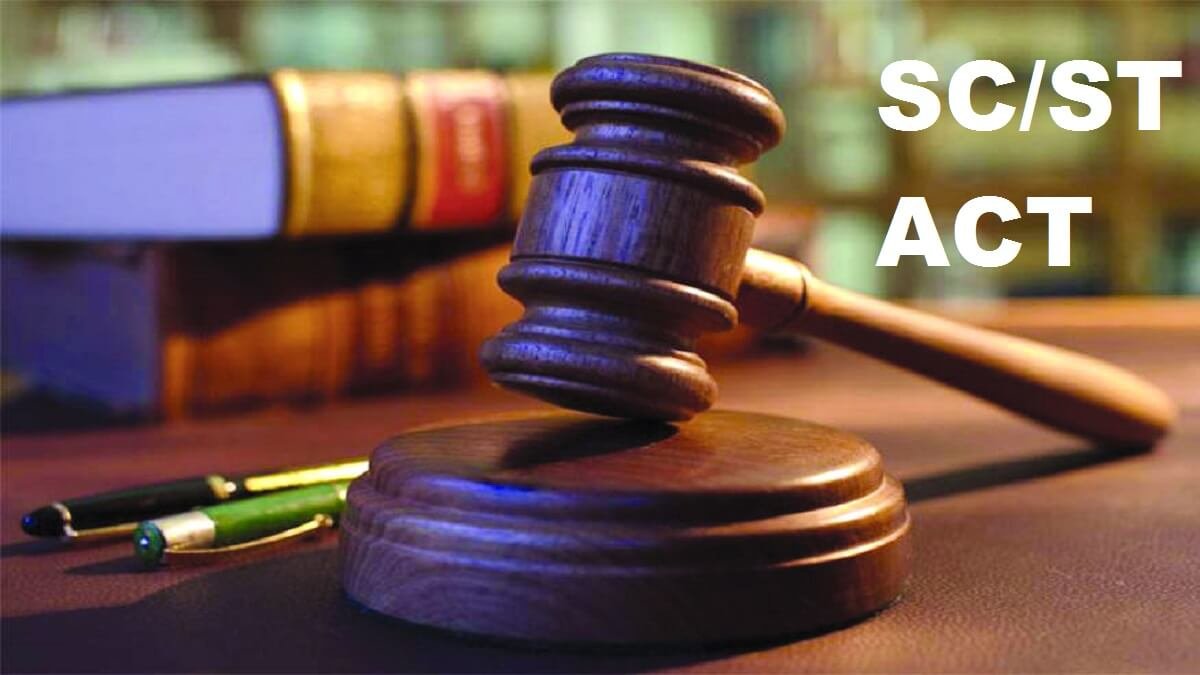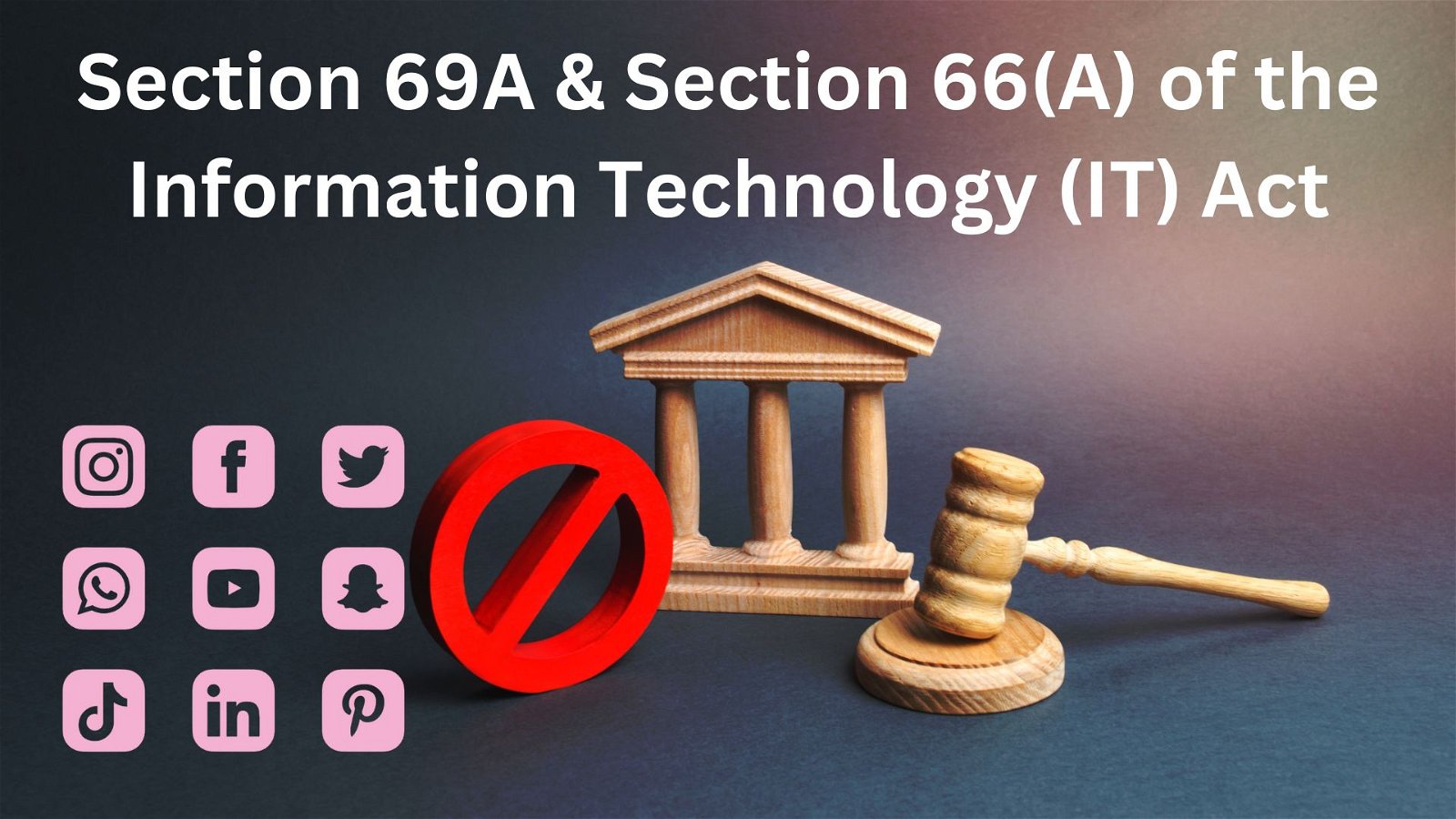
Current Affairs August 23, 2023: BRICS, PLI Scheme – Large Scale Electronics Manufacturing, North East Special Infrastructure Development Scheme, Fukushima Nuclear Plant, IAEA, Frictionless Credit, Dibang Multipurpose Project
Subscribers of "Current Affairs" course can Download Daily Current Affairs in PDF/DOC
Subscribe to Never Miss an Important Update! Assured Discounts on New Products!
Must Join PMF IAS Telegram Channel & PMF IAS History Telegram Channel
{GS2 – IR – Groupings – 2023/08/23} BRICS
- Context (TH): PM Narendra Modi is set to visit South Africa for the BRICS Summit.
- BRICS is a grouping of Brazil, Russia, India, China, and South Africa formed in 2010.
Evolution of BRICS
- In 2001, British economist Jim O’Neill coined the term ‘BRIC’, standing for the initials of four emerging economies at the time – Brazil, Russia, India, and China.
- The leaders of BRIC (Brazil, Russia, India, and China) countries met for the first time in St. Petersburg, Russia in July 2006.
- In September 2006, the group was formalised as BRIC.
- The first formal meeting was held in 2009 in Russia.
- South Africa joined in 2010, expanding it to ‘BRICS’.
- Now, BRICS includes these five economies, representing:
- 42% of the world’s population
- 30% of the world’s territory
- 23% of global GDP
- 18% of world trade.
Need of BRICS (Alternative mechanism for global governance)
- The unrepresentative character of global governance institutions has led to their failure.
- A more inclusive system like BRICS can fill such institutional vacuums.
- BRICS and SCO could ignite a genuine conversation on making global governance more representative and inclusive.
The rationale behind creating BRICS
- To counter the dominance of European and Western countries at international forums and institutions, such as the United Nations.
- To represent global south at the centre of international agenda-setting.
BRICS agenda
- The chairmanship rotates among the group annually.
- The Chair has to set the agenda, priorities, and calendar for the year.
Issues
- The five countries are not yet close together and trust each other like the Group of Seven (Group of advanced industrial nations).
- BRICS has not been able to steer the global economy in any significant manner.
- It doesn’t really want to make economic agreements within its members.
- Its historical capability to influence global geopolitics is overestimated.
- As a bloc, it is hardly an attractive investment destination.
15th BRICS Summit
- It is the first in-person meet since 2019.
- The agenda of the 15th Summit is ‘BRICS in Africa: Partnership for Mutually Accelerated Growth, Sustainable Development and Inclusive Multilateralism’.
Expansion of BRICS
- Over 40 countries have formally or informally expressed interest in joining an expanded BRICS.
- It reflects the anger in the global South countries about their place in the world.
- The expansion of the group would represent a major shake-up of the existing world order.
Benefits for China
- China is benefitting from the anti-Americanism of BRICS countries.
- Through BRICS China is drawing many countries in the Global South closer to China.
BRICS and Russia
- For Russia, the expansion of the BRICS states represents the chance:
- To overcome international isolation.
- To bring its allies — like Belarus and Venezuela into the club.
Expansion with caution (Lesson for India)
- If everyone tries to bring their friends into the BRICS, then the tensions within BRICS will rise.
- Given its size, economic influence, spread of the Belt and Road Initiative, and diplomatic bandwidth, China will influence an expanded BRICS.
- In an attempt to create a multipolar world and alternative mechanisms for global governance, India should not boost the rise of China and the China-centric world order.
Importance for India
- The platform could be a means of establishing its larger efforts to represent the Global South.
- The Summit could move things along from a diplomatic perspective.
- This is the first in-person summit since the military standoff with China at the Line of Actual Control began in 2020. This meeting could resolve the LAC situation.
- Just over two weeks after the BRICS summit, India will host the G20 summit, and India will want to ensure full attendance by the leaders, including all BRICS members.
|
India and Global Groupings
How can India be a part of the Quad, G-20, BRICS, SCO and global South at the same time?
- India’s active participation in non-western multilateral forums such as BRICS, SCO and the global South must also be seen as India’s response to the undemocratic and inequitable governance structures of institutions such as the International Monetary Fund, the World Bank and the UNSC.
- India’s objective is not to create or belong to an anti-U.S./West bloc either.
- Developmentally, historically, and geographically, India belongs to BRICS, SCO, and the global South.
- But India does not only belong to them. Structurally and aspirationally, the G-20, G-7, Quad and the like are where India is headed.
New Development Bank (NDB/BRICS Bank)
Membership
Contribution and Voting
|
{GS2 – MEITY – 2023/08/23} PLI Scheme – Large Scale Electronics Manufacturing
- Context (TH): PLI Scheme for Large Scale Electronics Manufacturing under the Ministry of Electronics & IT, was to boost domestic manufacturing and attract large investments in mobile phone manufacturing, including Assembly, Testing, Marking and Packaging (ATMP) units.
|
- The scheme offers a production-linked incentive of 4% to 6% on incremental sales (over a base year) of goods manufactured in India and covered under target segments.
- The Scheme is for a period of five years subsequent to the base year.
- The scheme has been successful in attracting major smartphone companies and their suppliers to India, such as Foxconn, Wistron, Pegatron, Samsung, Apple, Vivo, Oppo, Xiaomi, etc.
- It led to an increase in value addition in mobile manufacturing from 12% in 2019 to 20% in 2023.
- It has also resulted in a 20-fold increase in women’s employment.
- In the first year, mobile phone exports from India jumped from $300 million to $11 billion.
- Imports of mobile phones into India fell from $3.6 billion to $1.6 billion in the same period.
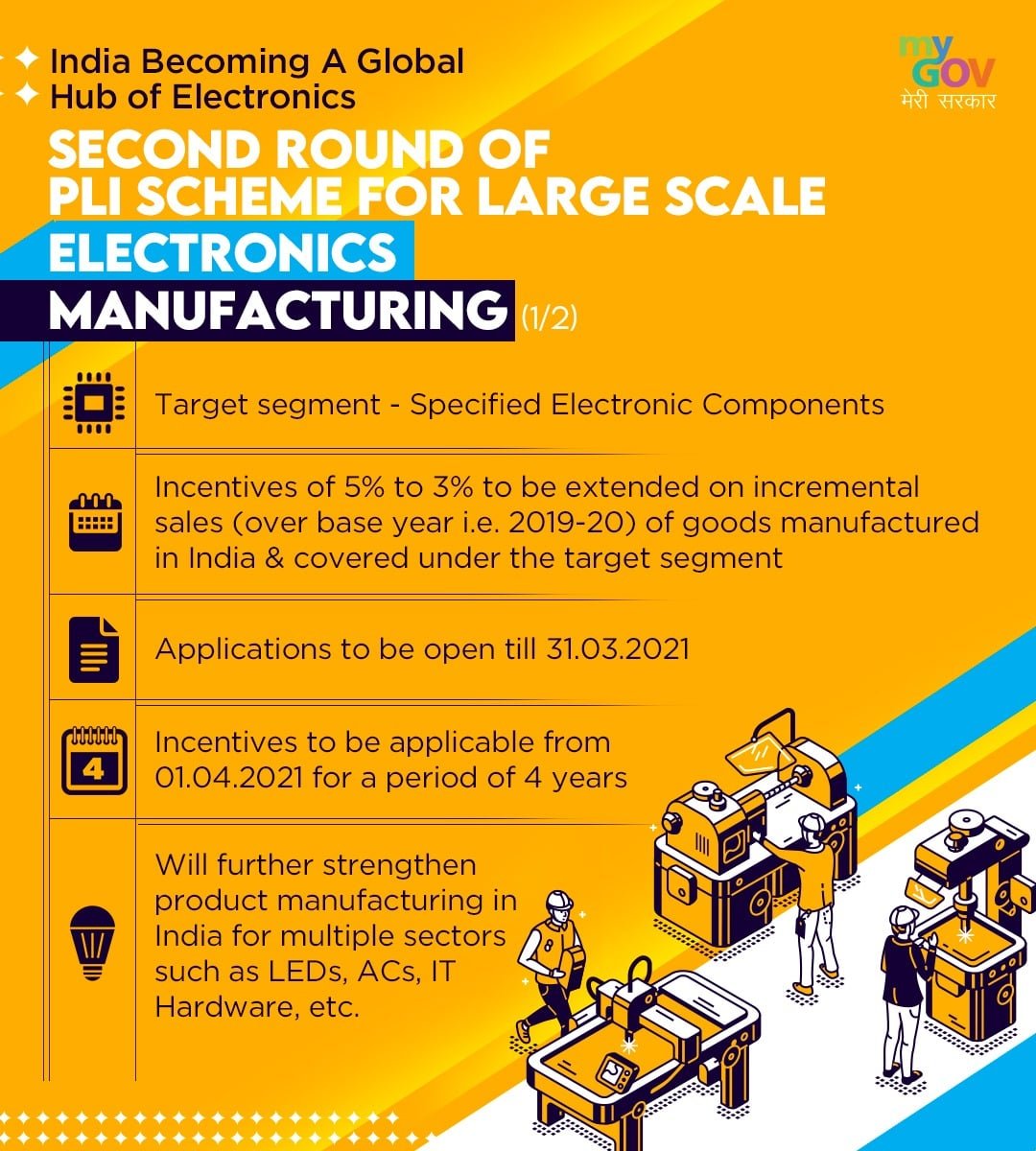

India’s Smartphone Manufacturing Dream: A Reality Check
- Former RBI Governor Raghuram Rajan has published a paper, “India’s Smartphone Manufacturing Dream: A Reality Check” which examines the impact of the PLI scheme for mobile phones.
- The paper argues that the PLI scheme has not achieved its intended objectives of boosting domestic manufacturing, enhancing value addition, creating high-quality jobs, and import dependence.
- It encouraged low-level assembly of imported components, which does not generate much value or employment in India, nor does it have a positive multiplier effect on other sectors.
- While imports of fully assembled mobile phones have declined, imports of mobile phone parts and components have increased significantly between FY21 and FY23.
- It shows exported phones are assembled from imported components rather than manufactured.
- Moreover, the paper argues that these jobs are vulnerable to automation and relocation, as assembly operations can be easily shifted to other countries with lower costs or better incentives.
Policy Changes Recommended by Raghuram Rajan
- Focusing On Specific Segments Where India Has A Comparative Advantage or Potential, Such As Battery Or Display Manufacturing;
- Linking Incentives To Value Addition Rather Than Sales.
- Providing Support For R&D, Skill Development, And Infrastructure Development;
- Ensuring Coordination And Consultation Among Various Stakeholders, Such As Industry Associations, State Governments, And Civil Society Groups.
Union Government’s response
- The Union Government’s argument was two-fold:
- First, all imports of screens, batteries, etc. are not used to make mobile phones. These items may also be used for computer monitors, DSLR cameras, electric vehicles, etc.
- Second, not all mobile phone production is supported by the scheme, only around 22% so far.
- The government’s overarching point is that import dependency isn’t as bad as assumed in this case.
Raghuram Rajan Reply
- He argued that even if only 60% of imports are used for production, India’s net exports will still be negative.
Conclusion
- The main divide is over whether the PLI programme will be able to create long-lasting jobs and firmly establish India as a manufacturing and supply hub that adds value to the production process.
{GS2 – MoDNER – 2023/08/23} North East Special Infrastructure Development Scheme (NESIDS)
- Context (PIB): The North East Special Infrastructure Development Scheme (NESIDS), has received the cabinet’s nod to continue with a budget of Rs. 8139.50 crore.
- NESIDS is a Central Sector Scheme (100% central funding to the State Governments ) under the Ministry of Development of the northeast region that was approved by the GoI in 2017.
- It’s for projects of Physical Infrastructure relating to water supply, power, connectivity, enhancing tourism, and social infrastructure (Education and Health).
- The scheme was restructured in 2022-23 to include two components:
- NESIDS-Road
- NESIDS-Other Than Road Infrastructure (OTRI)
- The objective of NESIDS is to supplement the efforts of the different Central Ministries and departments for uncovered development/welfare activities in the NER.
{GS3 – Envi – Water Pollution – 2023/08/23} Fukushima Nuclear Plant’s Wastewater
- Context (IE | TG | BBC | WION | TH | TH): Japan to release diluted radioactive wastewater from the Fukushima Daiichi nuclear plant into the Pacific Ocean.
- The nuclear was shut down in 2011 after its meltdown disaster.
What Happened 11 Years Ago in Fukushima Daiichi Nuclear Plant?
- The Fukushima Daiichi nuclear plant is in Okuma, Fukushima Prefecture, Japan.
- In March 2011, after a magnitude 9 earthquake, a tsunami flooded the Fukushima Daiichi nuclear power plant and damaged its diesel generators.
- The loss of power suspended coolant supply to nuclear reactors.
- Without cooling, the reactors began to overheat, causing the fuel rods to melt and release radioactive material into the environment.
- Since then, the power plant and its surrounding land have been uninhabitable.
- The event is regarded as the world’s second-worst nuclear disaster after the Chernobyl Nuclear Disaster in USSR.

Nuclear Power Plant (GS3 S&T, Nuclear Energy)
Basic Steps on How a Nuclear Power Plant WorksNuclear Reactor
Nuclear Reactor Coolant
Steam Generator
Turbine
Condenser
Neutron Moderator
Some of the Safety Features of a Nuclear Power PlantControl rods
Emergency Shutdown Systems
Containment Building
|
What is the Wastewater from the Fukushima Nuclear Plant that the Japan Government Wants to Flush?
- The wastewater that the Japanese government wants to flush from the nuclear plant includes:
- Contaminated coolant water
- Water injected to cool the reactors
- Contaminated rainwater
- Contaminated groundwater
- It contains radioactive materials from the damaged reactors and is thus itself radioactive.
- The water is collected, filtered and stored in tanks which and have almost reached their capacity.
- The release of the water is essential for the progress of the nuclear plant’s decommissioning and Fukushima prefecture’s recovery.
What is Radioactive Water?
- Radioactive water refers to the water that has come into contact with radioactive materials and become contaminated with radioactive isotopes.
- Radioactive isotopes have an unstable nucleus and undergo spontaneous nuclear (radioactive) decay.
- During the process of radioactive decay, the unstable atomic nucleus loses its energy by emitting radiation which is harmful.
- Radiation is harmful because it can damage cells and DNA.
Potential Risks of Radioactive Water
Environmental Contamination
- Radioactive water can lead to the contamination of soil, water bodies, and the overall ecosystem.
- The disruption in ecosystems may lead to long-term ecological consequences.
Human Health Impact
- Ingesting or coming into contact with radioactive particles can increase the risk of various health issues, including cancer, genetic mutations, and other radiation-related illnesses.

Water Supply Contamination
- Radioactive water can infiltrate local water supplies, including drinking water sources.
- This can lead to direct human exposure through consumption, skin contact, and inhalation of contaminated water vapour.
Agricultural and Food Contamination
- Contaminated water used for irrigation or in agricultural processes can lead to the uptake of radioactive isotopes by crops and livestock.
- This can result in contaminated food products entering human food chain, posing risks to consumers.
Economic Impact
- Perception of contamination, even at levels deemed safe by regulatory standards, can lead to economic repercussions.
- Fisheries, agriculture, and tourism industries in affected areas may suffer due to consumer concerns about safety.
International Relations
- In the case of transboundary water bodies, like oceans, the release of radioactive water can lead to concerns and disputes among neighboring countries.
Long-Term Waste Management
- Treating and managing radioactive water often generates byproducts (such as waste filters and resins) containing concentrated radioactive materials.
- Proper long-term storage and disposal of these materials are crucial to prevent further environmental contamination.
How the Radioactive Wastewater of the Fukushima Nuclear Plant Treated?

- The radioactive wastewater of the Fukushima nuclear plant was treated using Advanced Liquid Processing System (ALPS).
- ALPS is a system that removes multiple radioactive isotopes from water.
- The wastewater has been purified and treated until it satisfies safety standards for all radioactive materials other than tritium.
- For tritium, the water is significantly diluted with seawater before discharge so that it fully satisfies safety standards.
- The tritium concentration after dilution is less than 1/40 of the safety standard (or 1/7 of the WHO standards for drinking water).
How Save is the Release of Radioactive Wastewater of Fukushima Nuclear Plant?
- According to the Japanese Government, there is no concern about effects on human health or the environment due to the release of the wastewaster because:
- The wastewater will satisfy safety standards before it is discharged
- The total amount discharged will also be controlled
- The International Atomic Energy Agency in a final report in concluded that the release, if conducted as designed, will cause negligible impact on the environment and human health.
International Atomic Energy Agency (IAEA)
|
Who are Raising Concerns About the Release of Wastewater?
- Japanese fishing organisations strongly oppose it, thinking that it will further damage their seafood’s reputation, which they have been struggling to recover from since the nuclear disaster.
- South Korea and China have also raised concerns, turning it into a political and diplomatic issue.
- Environmentalists are also opposing the move.
{GS3 – IE – Banking – RBI – 2023/08/23} Frictionless Credit
- It will be developed by the Reserve Bank Innovation Hub (RBIH) (a wholly-owned subsidiary of RBI).
- The platform would bring all the data required for credit appraisal (Scrutiny) in a single place.
- Currently, the data required for the credit appraisal rests with different entities like central and state governments, account aggregators, banks, credit information companies, etc.
- This creates hindrances in the frictionless and timely delivery of rule-based lending.
Benefits of Public Tech Platform for Frictionless Credit
- Improves the access to information required for quick credit assessments.
- Eases the flow of credit.
- Facilitates “frictionless” and “timely delivery” of loans.
- Ensures credit is extended to a more extensive set of borrowers with good credit history.
- Helps the small and marginal farmers by increasing formal credit penetration.
- Lower the cost of accessing capital.
Credit appraisal
|
{GS3 – Infra – Energy – 2023/08/23} Dibang Multipurpose Project
- Context (ET I TH): The Dibang Multipurpose Project is a flood control and hydroelectric power project planned to be developed on the Dibang River, in Arunachal Pradesh.
- At 2,880 MW of installed capacity, it will be the country’s biggest hydropower facility.
- The project envisages the construction of a 278m-high and 375m-long concrete gravity dam, which will be the highest dam structure in the country.
- The dam will create a 43 km-long reservoir with a gross storage capacity of 3.85 billion cubic metres.

Dibang River
|





![PMF IAS Environment for UPSC 2022-23 [paperback] PMF IAS [Nov 30, 2021]…](https://pmfias.b-cdn.net/wp-content/uploads/2024/04/pmfiasenvironmentforupsc2022-23paperbackpmfiasnov302021.jpg)


